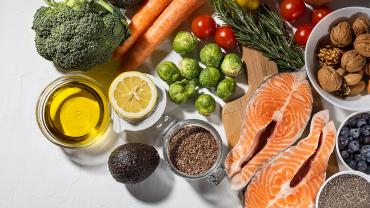
When searching for quality supplements, many wish to find natural options rather than synthetic forms. However, there is no simple definition for natural, and something is not simply better because it is natural. In this pursuit, it is common to come across the terms “whole foods vitamins” and “bioavailable” or “bio-identical” nutrients. It’s important to understand the distinctions to make the right decision for each situation. Some “natural” options may not have the benefits assumed by consumers based on certain connotations associated with terms such as “whole food vitamins.”
What are Whole Food Vitamins?
There are typically three types of products that use the terms of “whole food vitamins.”
Standard USP vitamin-fused food: standard United States Pharmacopeia (USP) vitamins combined with dried foods or herbs. This may be similar to taking USP supplements with a meal, although the amount of dried foods or herbs is generally lower than that found in a meal.
Standard USP vitamins grown in a yeast broth: standard USP vitamins added to a liquid broth containing yeast. As the yeast grows, the vitamins and minerals are incorporated into the cell structure of the yeast. The yeast is killed in a drying process, and the residue is pressed into tablets with herbs, binders, and manufacturing additives. Because of the amount of space occupied by the yeast, products made in this manner may be very low in potency.
Dried or pressed whole food vitamins: encapsulated, tableted, or powdered dried foods and pressed oils, such as green powders or fish oils. Because of size constraints, these products usually have lower potency. Taking these supplements might be compared to eating good organic foods but in smaller quantities.
What are Bioavailable Forms of Nutrients?
The body uses specific forms of nutrients and phytochemicals in its processes. These forms are found in whole foods or may require digestion or metabolism by the gut microbiome to reach the bioactive form. Supplements that contain the bioactive forms of these nutrients are often referred to as bio-identical, bioavailable, or bioactive. These forms undergo a similar digestion and absorption process to the forms found in food, although some bioactive forms of nutrients may bypass digestion.
One example of a bioavailable supplemental form of a nutrient is 5-methyltetrahydrofolate (5-MTFH), the bioactive form of folate. The synthetic version is folic acid, which is found in many supplements and fortified foods. For folic acid to be biologically active, it must be converted into 5-MTHF. The process for this requires multiple steps and the enzymes, dihydrofolate reductase (DHFR) and methylenetetrahydrofolate reductase (MTHFR). Folic acid may not be efficiently metabolized into 5-MTHF, leading to unmetabolized folic acid (UMFA), which has been found to potentially impact health.
In one study, 38% of the study population had detected levels of UMFA, with a mean concentration of 4.4 nmol/L. Those with detectable UMFA were more likely to supplement with folic acid.
Another study reviewing the impact of folic acid fortification found circulating folic acid in 67% of the study participants. Polymorphisms affecting these enzymes may impact the ability to convert folic acid into 5-MTHF, increasing the risk of high levels of circulating UMFA.
Each nutrient has its own unique bioactive form(s) that may be preferred. Utilizing bioactive nutrients may increase the efficacy of the supplement, especially when there may be problems with digestion or metabolism, such as digestive disorders or polymorphisms.